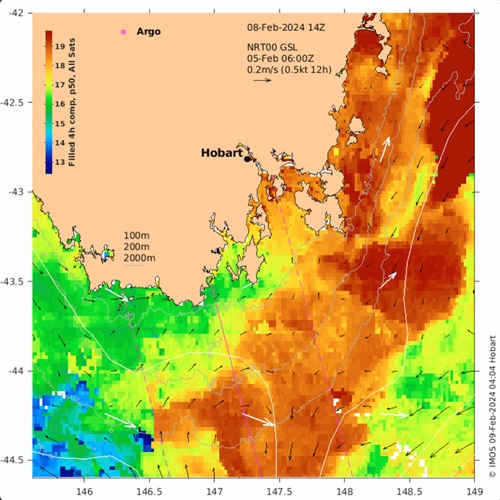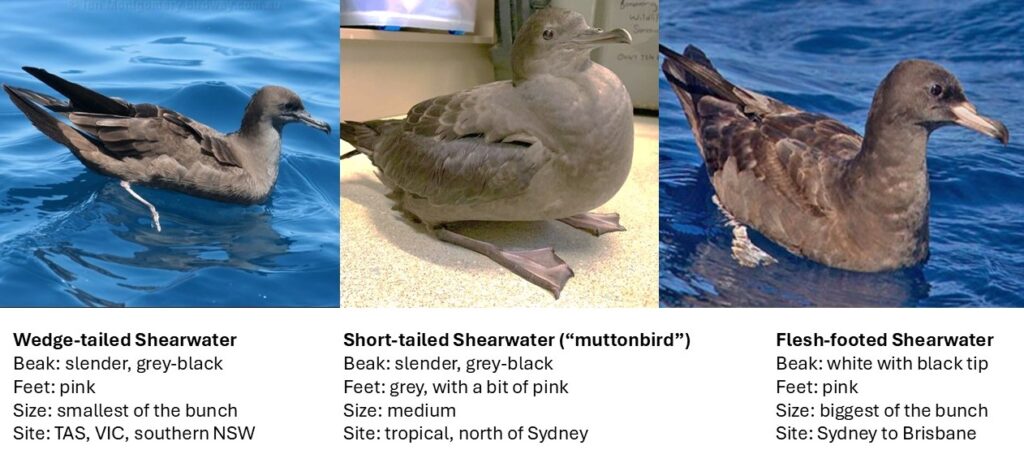Reporting seabird mortalities to Adrift Lab
Starting in Oct/Nov (and often continuing until May), seabirds sometimes begin washing up dead/dying on beaches from Brisbane to Hobart (including west to Adelaide and sometimes beyond). The death of 100s or 1000s of seabirds at one time is referred to as a #MassMortality or #wreck event. In Australia, the main species caught up in these events is usually the Short-tailed Shearwater (or ‘muttonbird’), though particularly bad events can involve other species too (while ID is not required as our team will do this for you, we’ve provided a brief guide below for those who are interested).
WHAT CAN YOU DO?
– Take a photo of the scene and individual bird (photo should include the beak/feet)
– Record how far you walked (estimates are fine)
– Note how many people (we need this to calculate search effort)
– Record the total number of dead/dying birds you observe
Our Adrift Lab team has written about this issue in the past, and made a number of important recommendations about what data to record, and how. The paper is titled “A proposed framework for reporting mass mortality (wreck) events of seabirds” and you can read the abstract here.
WHERE TO SEND YOUR PHOTOS AND DATA?
- Email: [email protected]
- direct message via any of #AdriftLab’s social media channels (you can also reply to one of our existing posts)
WHAT’S CAUSING THE BIRDS TO DIE?
We’re pretty disappointed to see reputable organisations suggesting this mass-mortality event is “normal” or “natural”. It isn’t. Nor is it directly linked with the birds’ long-distance migration (which for the shearwaters, is completed more than a month before birds start washing up on beaches – and for Fairy Prions, they haven’t even migrated yet as these are juvenile birds). Besides, if migration really was the cause, we’d see 100s or 1000s of dead shearwaters on our beaches every single year. Thankfully, we don’t. We should do everything we can to NOT normalise these mortality events, and instead, treat it like the alarm bell that it is. Seabirds are the marine equivalent of the “canary in the coal mine” and we should be listening to what they’re telling us.
What’s causing the deaths is likely to be one of two things. First, let’s talk about #MarineHeatwaves. With climate change and ocean warming, marine heatwaves are becoming more common, especially off the east coast of Australia – here are some links to provide you with information about this (and below is a photo of of the sea surface temperature (SST) anomaly in February 2024, when Fairy Prions began washing up)
- South-east Australia marine heatwave forecast to be literally off the scale
- A monster eddy current is forming off Sydney. What is it, and will it bring a new marine heatwave?

Here are a few explanatory sentences from the paper we published in 2021 (link above): “Ocean temperatures are rising due to climate change, and extreme events such as marine heatwaves are increasing in frequency, subsequently influencing the abundances of marine predators and their prey. Marine heatwaves, along with a broad spectrum of additional threats, are causing many seabird populations to decline. Most of these threats are synergistic or cumulative, and virtually all are increasing in their frequencies and intensities. Although storms and strong winds may increase the likelihood of birds washing up, the cause is most likely related to a shortage of food reducing the bird’s condition. Anomalous oceanic conditions and climatic phenomenon, such as El Niño-Southern Oscillation (ENSO), have also been shown to impact seabird survival often resulting in wreck events. Seabird wrecks caused by environmental variables appear to have increased in frequency in some areas. Such events highlight the impact of environmental pressures that birds are facing globally, which are now exceeding the ability of many species to cope. Monitoring beach-washed seabirds, including those species that migrate, can provide insights into the spatial and temporal extent of wrecks and other anomalous events.”
A substantial marine heatwave resulted in the deaths of an estimated 200,000 shearwaters that washed up from Brisbane to Hobart during the summer of 2013/2014. This photo of a beach in Newcastle is particularly harrowing.
A common question we get and a potential 2nd explanation for some of the birds’ deaths: could these birds have died from Avian Flu (HPAI), as has been recorded for seabirds in the Northern Hemisphere, South America and Antarctica over the past 2 years? The answer to this question is not straightforward, unfortunately. Hundreds of shearwaters, shorebirds, and ducks were tested in Australia in 2023, and thankfully they all tested negative (here’s our paper). That does not mean that we are in the clear and we should absolutely take precautions. Monitoring and testing is ongoing (- we assure you multiple teams of exhausted (and sad) scientists (including members of the Adrift Lab team) are putting in some long hours to keep on top of this. Please be patient and kind.
In the meantime, a wealth of fantastic avian flu (HPAI) resources have been developed to help people understand the potential risks to themselves, their pets, and wildlife. Instead of including a list of links here, we want to refer you to our colleague, Dr Michelle Wille: her website is the go-to for information and real-time updates (click here).
🛑Please note that the most important thing you can do this season (starting September 2024) is to NOT TOUCH ANY BEACH WASHED BIRDS OR MAMMALS. That’s right, don’t move them or attempt to take them to your local vet or carer. We know you want to help, but this is not the way. Instead, send us a photo and the data requested above (date, location, distance, etc) and we will enter this into the national database so that we can monitor the numbers and locations of birds washing up🛑
🐦⭐FOR COMPREHENSIVE AND ACCURATE AVIAN FLU (HPAI) INFORMATION, GO TO THIS WEBSITE (please do not trust social media) ➡️ https://www.michellewille.com/avian-influenza-resources/
ADDITIONAL INFORMATION:
Identification of seabirds commonly found during Australian wreck events
Most common species is the Short-tailed Shearwater (or ‘muttonbird’). This species breeds primarily in Tasmania, with smaller numbers in VIC and southern NSW. These birds are medium-sized (roughly the size of a Silver Gull) with a slender grey-black beak and greyish feet.
Further north (especially around Sydney and Brisbane), we sometimes see beach-washed Flesh-footed Shearwaters. These birds are slightly larger with a distinctive beak: it’s white with an obvious black tip.
Also in the north, we occasionally receive records of Wedge-tailed Shearwaters. These birds are the smallest of the bunch, their black beak is delicate and they have pink feet (note: Flesh-foots also have pink feet).
You’ll note that these 3 species have a lot in common: they all have grey-black feathers, two have pink feet, and two have a slender, grey-black beak. This makes ID difficult, so when taking photos, please do your best to document the colour of the feet & beak (without actually touching the bird though).

***FEBRUARY 2024 UPDATE (last season)*** In February, another wreck event began, this time involving mostly Fairy Prions (a small seabird and with blue-grey feathers). I’ve left this information here on this page as a similar event may take place in February 2025. Last season, early indications were that the February event may also involve a few other seabird species, including some that look similar to each other (especially when the birds are water-logged or the carcass is starting to degrade). To enable correct identification by the Adrift Lab team, we ask that you take extra care with your photos. Ideally, take photos of every bird you encounter on the beach. In each photo, ensure the beak shape and colour of the feet is visible. Photos of the under-wing and back of the bird can be very useful as the colour/pattern is often used in identification.
***NOVEMBER 2024 UPDATE*** large numbers of shearwaters (both species) are once again washing up from K’Gari to Tasmania (particularly in southern NSW). While the marine heatwave forecast is lower compared to Nov 2023, there is some complex and significant changes to upwelling of the East Australian Current (EAC) leading to localised warming and lack of prey. In November, the Bureau of Meteorology released it’s “State of the Climate” report – the oceans section is certainly worth a quick read for those who are interested. It states “The greatest ocean warming in the Australian region has occurred off south-east Australia and Tasmania where more rapid warming trends have occurred over the past 4 decades. The East Australian Current now extends further south, creating an area of more rapid warming in the Tasman Sea, where the warming rate is now twice the global average“. This same region is where the shearwaters we are seeing beach-washed are trying to locate food to eat. Rapidly warming waters forces their prey to move elsewhere & out of reach of the birds).
Last but certainly not least, a HUGE THANKS to our amazing partners, Living Ocean, for supporting us in collecting and analysing all of the beached bird data collected by #CitizenScientists in Australia. We would not be able to do what we do without you 24/7 support and encouragement. #OceanWarriors #volunteers #gratitude #TeamWork